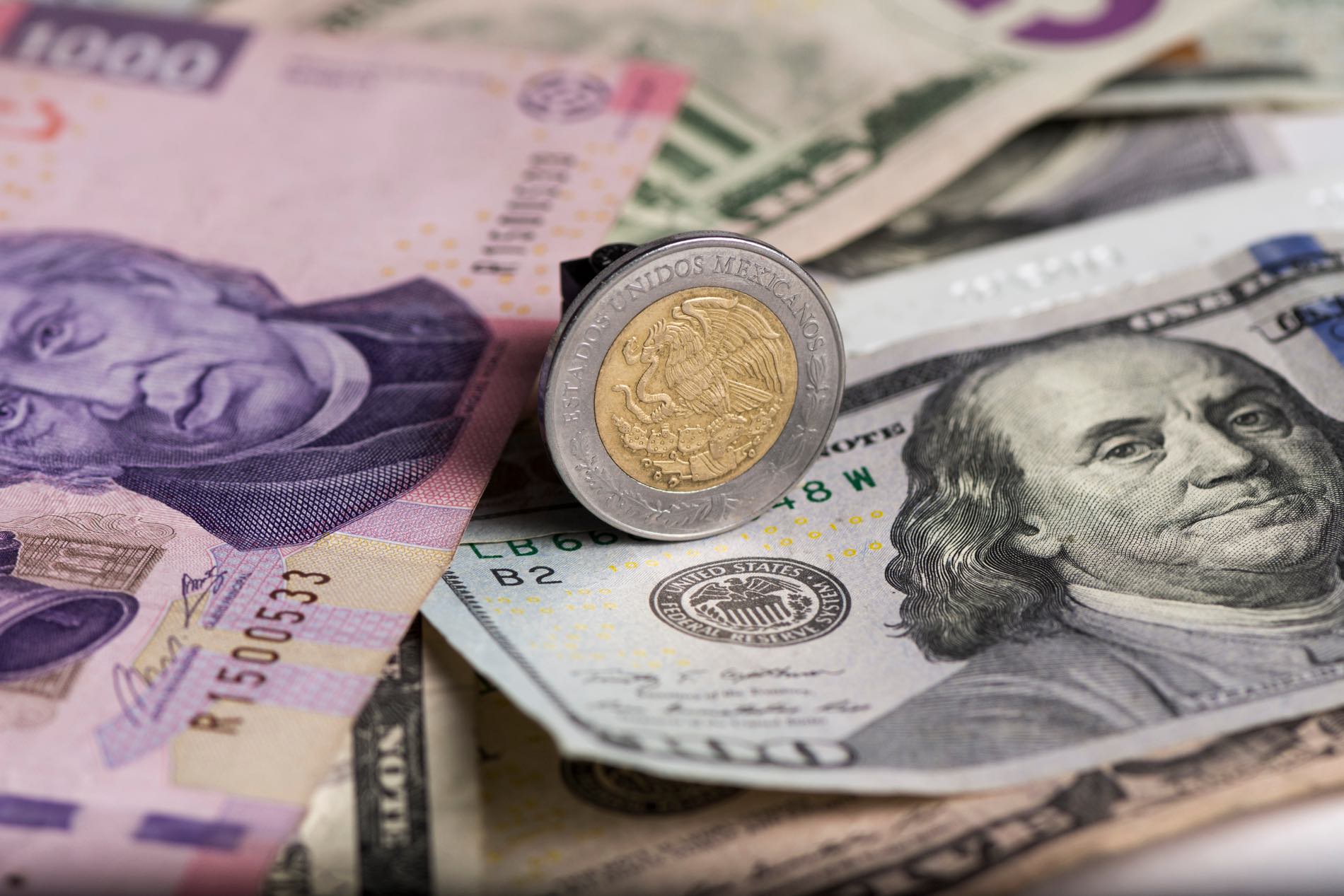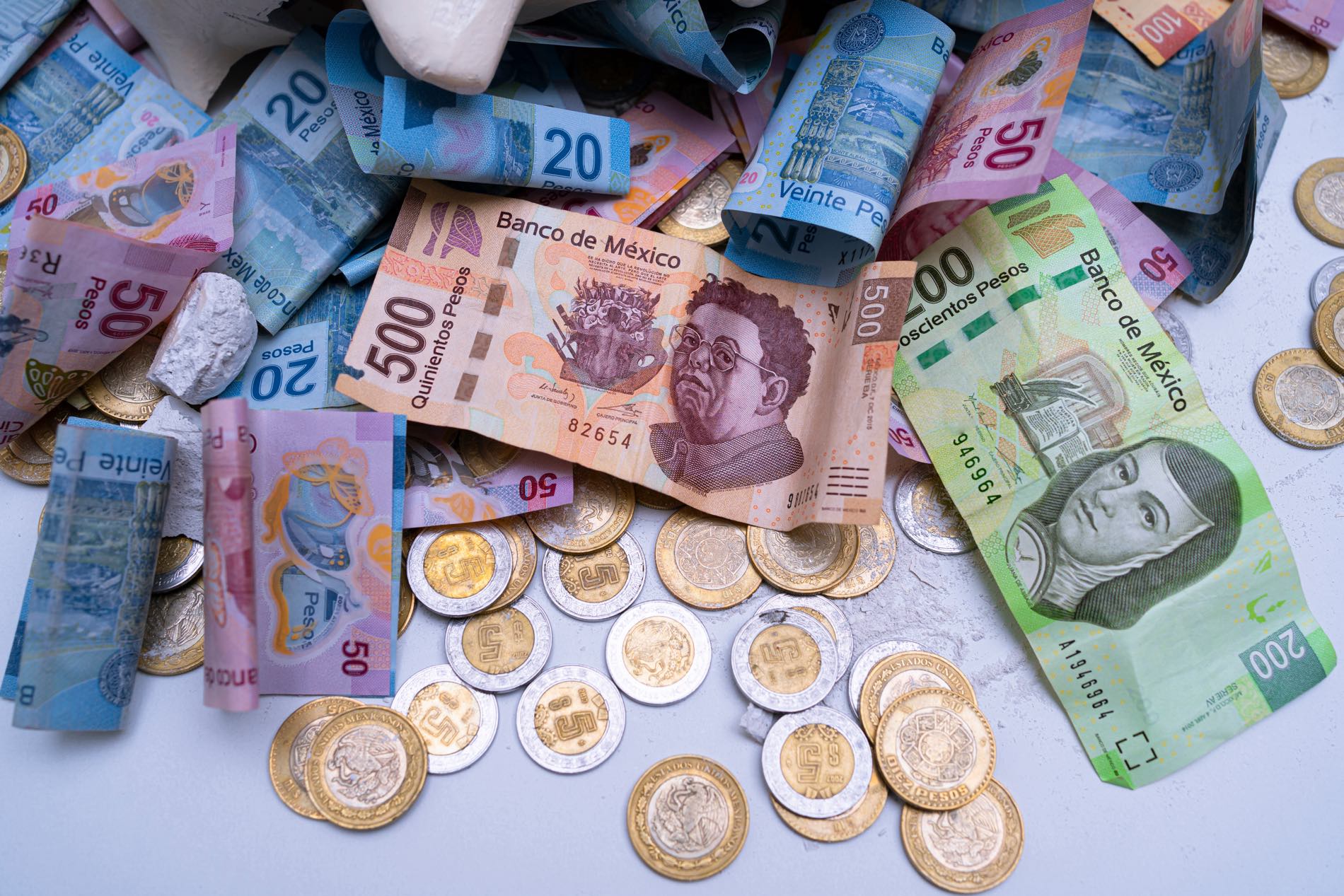[thrv_dynamic_data_content id=’the_title’ inline=’1′]
Seasoned globetrotters know how complicated it can be trying to familiarize yourself with a new currency. Be it fluctuating exchange rates, surprise fees or lacking monetary infrastructure, every currency has its own surprises, and changing from Dollars to Pesos is no different. Luckily for you, understanding how money works in Mexico isn’t the towering mystery it may seem, and there are various tips and tricks that can help you navigate the intricacies of paying your way forward through Baja.
Cash vs. Credit
First of all, it’s important to know that Baja California is no stranger to strange money. Deep roots with American tourists means that the USD is accepted across most of the peninsula, and if you’re lucky, you won’t have to worry about exchanging currency at all. That said, using “efectivo” (cash) dollars may not be the best idea. In an increasingly digital world cash is losing ground to credit, and luckily for you, that means most establishments will accept credit cards and the exchange rate with the credit card is often better than foreign cash if the merchant bills in pesos. Still, it’s important to be diligent. Always ask about the exchange rate. Check your bank fees and make sure to check every item on your statements.
Credit card fraud is an international problem. On top of the dangers, there are also upfront issues. Banks tend to charge fees on international purchases, and although credit card adoption is near-universal, you’ll find exceptions in smaller less tourist-oriented stores. For places like those, and simply to minimize the risks of using your credit card in a new place, it’s best to have at least 100$ USD worth of cash on hand, just in case. Keeping at least some cash is important in case an issue pops up that you don’t expect. With that said, there are some important things to keep at the forefront when acquiring peace of mind.
Recently, there has been a government crackdown meant to discover and decirculate laundered money, spurring a fresh series of regulations and restrictions. Unfortunately for those looking to pay in efectivo, that means old or damaged bills are often not accepted, and tourists may find unexpected roadblocks to exchanging money at some banks, such as being subject to limitations on how much can be exchanged at a time.
You may ask yourself, is it really worth it to convert your dollars to pesos? The answer is yes. You could save as much as 10-15% by making purchases in pesos, on top of being safer and more universal. A little hassle now will save you bigtime down the road. But how, exactly? It’s one thing to understand why you should convert currency, it’s another to understand how. So let’s break that down.Now remember, the Mexican peso can vary a lot in how it’s valued next to the US dollar, let alone other currencies. For the purposes of simplicity, we’ll be focusing on the USD. As of now, it floats at around 18-21 pesos to the dollar, but historically it’s been as strong as 12 pesos to the dollar just a few years ago.
It’s unclear how the peso will fluctuate in the future, but luckily for you the conversion rate is easily posted at businesses that offer currency conversion.
Converting Your Cash
Oh yeah! How exactly do you convert currency while in Mexico? The answer is simple. Savvy tourists can use currency exchange booths available locally, everywhere from the airport to downtown. These booths offer conversion from dozens of currencies globally, but be aware that their rates can vary greatly, and all of them exchange to the booth’s advantage. Advertised rates are given to buy and sell dollars: If you sell a dollar, you’ll receive a lower value in pesos, and if you but a dollar, it’ll cost more pesos than what you would have sold it for. Essentially, if you see two exchange rates on a sign, you will receive the lower one for your dollars.
If you’re exchanging in a currency that isn’t USD, have no fear! Canadian dollars are also usually exchanged easily at money booths, and a few have even started exchanging Euros. It’s always good to compare exchange rates and terms. Be sure not to exchange more than $20 at the airport, if you’re not careful you could lose up to 25% of your cash on the exchange rate. Wait until town, where rates are more reasonable, and you have more options.Remember, exchange rates vary from location to location and may change hourly, so make sure to look for the best rate available between your options! Finally, be sure to remember that if you’re crossing into Mexico by car, the exchange rate may be better on the Mexican side of the border for those wanting pesos.
If you’re still determined to not use credit cards or cash, it’s possible to avoid using both, but with admittedly much more hassle. Personal checks are not honored unless drawn from a Mexican bank, and even then only at the bank that issued the check. Intercam is a newer bank that is foreign friendly, and foreign residents are finding it easier to work with them. All banks are extremely meticulous about signatures, and identification must be with a passport. On top of that, banks have become hesitant about changing foreign cash, especially for non-customers. As of now, Intercam will change up to $1500 US dollars, Canadian dollars, and Euros for a non-customer with a passport.
So, hopefully by now you know what to use, how to get it and what potential pitfalls may still be ahead. That being said, scams and tricks are still prevalent across the board, and it’s important to know just what forms they may take.
Money, or how to keep it
Keep it Legal. Always be sure to use officially certified exchange businesses. Don’t deal with people on the street. Beware of anyone offering you much more than the official rate, and check the conversion with a calculator. There are plenty of scams used by unscrupulous individuals to cheat you out of your money.
Incorrect Calculations. To help understand just how this works, here’s a personal story. Just when I thought I had seen it all, a money exchange booth I visited some years ago advertised that their exchange rate was 18.95 pesos for $1. They gave me the money along with my receipt, but thanks to how gloomy their office was, I didn’t realize they had swapped the 9 for a 7. Instead of the advertised rate, I paid at 18.75 for $1, and lost 20 pesos on every dollar because I didn’t double check everything.
Counterfeit bills. Counterfeiting is a significant issue as well. When you’re exchanging money, be sure to check both sides of the bill. In many cases, you’ll find counterfeit money may be perfect looking $100 bills on one side, but obviously fake on the other. I once got scammed by 2 foreign women at a food bar who wanted change for their “$100 bill “. The other side was just blank!
Crass at the Gas. Gas station attendants are notorious for giving incorrect change. Make sure the gas pump starts at 0.00 and count your change. If correct, give a 10-20 peso tip (propina).
Folding. Just like anywhere else, a common scam is doubling over bills and counting them twice. Always count each bill separately, not from one side of the bundle. Pay attention to the counting and hold the money after it is counted to be sure there was no trickery afoot.
ATM Trickery. In a pinch, ATM’s are available in the big cities like Loreto, La Paz, San Jose or Los Cabos. While useful, it’s important to stay on your guard using automated machines like these. Count the withdrawal to the correct amount, and be sure to check your bank statement later, which may contain errors regarding the transaction. Observe safety tips as you would anywhere. Be sure to take your card and receipt out of the machine. Beware of exorbitant bank charges for foreign transactions. Check with your bank prior to starting your trip. Often you need to tell them about your travel plans before leaving the US or Canada; otherwise your card may be blocked.
How to Tip (not trick)
Finally, now that you’re money savvy and ready to face the world, we highly encourage you to use your new wisdom for good.
A “Propina,” or a tip, may be a large part of the worker’s income since the minimum salary is only about $7.00 a day, or approx.. 150 pesos a day. (A liter of milk costs about 30 pesos.) It is customary to tip everyone who gives you extra service, because those tips could prove vital to the workers. Any Mexican who is helpful appreciates a small tip. Remember, 20 pesos is only about $1, but it means a lot to a local.
If you’re wondering about standard tipping rates, we’ve got you covered. A 15 percent tip is welcome for food service, however, always check your bill to see if the “servicio” is included. (16% IVA is tax, not tip.) Propinas are really appreciated, especially during the holidays.
If you want to do more, there are plenty of people still in need. You may find people at stop signs with collection boxes for the Red Cross, local police force or even fire departments. These donations may be a large source of operating expenses, and are greatly appreciated. For example, the Red Cross depends solely on the voluntary donations and provides lifesaving help for many victims of vehicular and road accidents. You’ll even receive a Red Cross sticker for your windshield when you donate, to help show you care for the community.
Money is fickle, and hard. We hope that everything we’ve covered so far can help you navigate it well. The better you understand the way things work, the better your experience will be! Now get out there, and get fiscally responsible!And finally, remember to check your bill and count your change!
These are just some of the tips presented in “The Drive To Cabo; What They DON’T Tell You”, by Adrienne Kenlan, For more info, contact her at; drivetocabo@gmail.com




